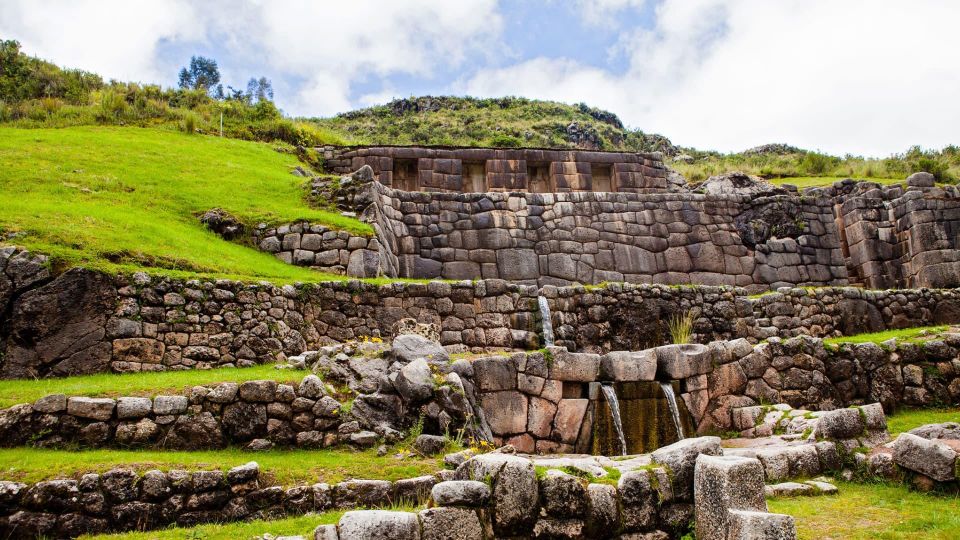In Japan, naturally fermented miso holds a special place in culinary traditions, offering a depth of flavor and unique umami taste. From its humble beginnings to its diverse regional variations, miso has become more than just a condiment – it’s a symbol of Japanese culinary heritage.
But what makes miso fermentation so special, and how does it contribute to the complexity of Japanese dishes? Stay tuned to uncover the secrets behind this versatile ingredient and its role in shaping the essence of Japanese cuisine.
Key Points
- Miso is a traditional Japanese seasoning with global influence.
- Complex fermentation process yields diverse flavors and colors.
- Naturally fermented miso offers health benefits like probiotics.
- Regional varieties showcase Japan’s culinary diversity and heritage.
It's also worth checking out some other tours and experiences nearby.
Origins of Miso in Japan
Miso, a traditional Japanese seasoning, has been a staple in Japanese cuisine for centuries. Its origins trace back to ancient Japan, where it was first introduced as a way to preserve soybeans. Over time, miso hasn’t only become a fundamental ingredient in Japanese dishes but has also made a global impact, captivating taste buds worldwide.
The process of making miso involves fermenting soybeans with salt and koji (a type of mold) for varying lengths of time, resulting in different flavors and colors. While traditional methods are still prevalent, modern innovations have introduced quicker fermentation techniques to meet the demands of today’s fast-paced world. These innovations have helped maintain the authenticity of miso while catering to modern preferences.
Traditional Miso Production Process
The traditional method of producing miso involves a meticulous fermentation process that infuses soybeans with salt and koji, resulting in a diverse range of flavors and colors. Miso fermentation techniques have been perfected over centuries, with each region in Japan having its unique approach, contributing to the rich tapestry of miso varieties available. Plus, miso ball making techniques offer a hands-on experience for enthusiasts, allowing them to customize their miso balls with various toppings. These variations in miso ball making not only enhance the visual appeal of the dish but also provide different textures and flavor profiles. The benefits of these traditional processes include increased digestibility, enhanced umami taste, and a wealth of probiotics for gut health.
| Miso Fermentation Techniques | Benefits |
|---|---|
| Regional variations | Rich flavors and colors |
| Hands-on miso ball making | Customizable toppings |
| Diverse miso varieties | Enhanced texture and taste |
| Centuries-old traditions | Improved digestibility |
| Probiotics for gut health | Increased umami taste |
Health Benefits of Naturally Fermented Miso
Taking a look at naturally fermented miso unveils a treasure trove of potential health benefits waiting to be explored.
Miso, through its fermentation process, becomes a powerhouse for gut health. The fermentation of soybeans and grains enhances the miso’s probiotic content, promoting a healthy balance of gut bacteria. This, in turn, can aid digestion and improve overall gut function.
Plus, the probiotics found in naturally fermented miso can help boost the immune system by supporting the body’s natural defense mechanisms. Consuming miso regularly as part of a balanced diet may contribute to maintaining a robust immune system.
Therefore, incorporating naturally fermented miso into meals not only adds delicious flavor but also offers valuable health benefits.
Regional Varieties of Japanese Miso
Exploring the diverse regional varieties of Japanese miso reveals a fascinating array of flavors and textures waiting to be savored. When delving into the world of Japanese miso, one can experience a range of unique regional miso types that showcase the country’s rich culinary heritage.
Here are some highlights to consider:
-
Miso Tasting: Sample a variety of miso types from different regions to appreciate the nuances in flavor.
-
Miso Making Workshop: Engage in hands-on experiences where you can learn to craft miso from scratch.
-
Regional Varieties: Discover miso specialties from areas like Hokkaido, Kyoto, and Nagano, each offering distinct characteristics.
-
Culinary Diversity: Experience the versatility of miso in regional dishes, highlighting its role in Japanese cuisine.
Culinary Uses of Miso in Japan
Discover the versatile and flavorful world of miso in Japanese cuisine, where this fermented soybean paste adds depth and richness to a variety of dishes. Japanese miso recipes encompass a wide range of uses beyond just soup, including marinades, glazes, dressings, and even desserts.
Miso fermentation techniques vary across regions and households, resulting in unique flavors and textures. From the hearty miso soup to the umami-packed miso-glazed dishes, miso is a staple in Japanese cooking. Its salty-sweet profile enhances meats, vegetables, and seafood, making it a go-to ingredient for adding complexity to dishes.
Whether used as a base for broths or mixed into sauces, miso brings a depth of flavor that’s both traditional and innovative in modern Japanese cuisine.
Miso in Japanese Culture and History
Stemming from centuries-old traditions, miso holds a significant place in Japanese culture and history, reflecting the essence of culinary heritage intertwined with societal practices.
Key Points:
-
Historical Significance: Miso has been a staple in Japanese cuisine for centuries, with recipes passed down through generations.
-
Cultural Significance: Miso plays a crucial role in Japanese rituals and celebrations, symbolizing unity and harmony.
-
Fermentation Techniques: Traditional miso fermentation methods have been honed over time, contributing to the unique flavor profiles.
-
Versatile Usage: Miso isn’t just a condiment but a key ingredient in various Japanese dishes, showcasing its adaptability in different recipes.
Miso as a Superfood: Nutritional Profile
When looking at miso from a nutritional standpoint, it emerges as a versatile and nutrient-dense superfood. Miso offers a wide array of benefits, including being a rich source of essential nutrients like vitamins B, E, and K, as well as minerals such as manganese, zinc, and copper.
It’s also packed with probiotics, beneficial bacteria that support gut health and boost the immune system. Miso’s fermented nature aids in digestion and nutrient absorption. Incorporating miso into recipes can enhance flavor profiles while adding a nutritional punch.
From miso soups to marinades and salad dressings, there are endless ways to enjoy the benefits of this superfood in everyday cooking.
How to Incorporate Miso Into Your Diet
To add depth and umami flavor to your dishes, consider mixing miso paste into marinades, dressings, or even as a glaze for roasted vegetables. Here are four simple ways to incorporate miso into your diet:
-
Miso Soup: Enhance the flavor of your homemade soup by adding a tablespoon of miso paste for a rich and savory taste.
-
Miso Marinades: Create flavorful marinades for meats or tofu by combining miso paste with ingredients like soy sauce, garlic, and ginger.
-
Miso Dressings: Whisk miso paste into salad dressings for a unique and tangy twist to your greens.
-
Miso-Glazed Vegetables: Coat roasted vegetables with a mixture of miso paste, honey, and olive oil for a delicious caramelized finish.
Incorporating miso into your meals is a delicious way to enjoy its unique flavor profile and health benefits.
Here's a few more nearby tours and experiences we think you'll like.
Common questions
What Are the Common Misconceptions About Miso That People in Japan Often Have?
Many in Japan hold common misconceptions about miso due to cultural beliefs. Understanding the charm and versatility of miso can debunk these myths. Learning about the different types and making miso balls can change perceptions.
How Has the Production Process of Miso Evolved Over Time in Japan?
Over time, the production process of miso in Japan has evolved significantly, reflecting the country’s deep cultural significance. Changes in techniques and ingredients have enhanced miso making, preserving tradition while adapting to modern tastes.
Are There Any Specific Rituals or Traditions Associated With the Consumption of Miso in Different Regions of Japan?
Regional customs in Japan showcase diverse miso traditions. From daily meals to festive celebrations, miso holds a special place. Each region boasts unique ways of incorporating miso, enriching dishes with depth and umami flavors.
Can Miso Be Used in Non-Traditional Japanese Dishes, and if So, What Are Some Creative Ways to Incorporate It Into International Cuisine?
Miso, a versatile ingredient, shines in fusion cuisine. Its umami-rich flavor elevates non-traditional Japanese dishes like miso-glazed salmon or miso caramel desserts. Global miso trends showcase its adaptability in diverse recipes, making it a pantry essential.
How Has the Perception of Miso Changed in Modern Japanese Society Compared to Its Historical Significance?
The evolution of miso’s perception in modern Japanese society showcases a shift from its deep cultural significance to a versatile ingredient embraced in new ways. Modern trends highlight miso’s adaptability and appeal beyond traditional boundaries.
Not for you? Here's more of our most recent tour reviews happening neaby
- 3-Hour Private Tour in Osaka Rapids Hike and Natural Hot Spring
- Private Shore Excursion Kobe Port – Best of Osaka With a Local
- Osaka Airport Transfers : Osaka City to Kansai Airport KIX in Business Car
- Airport Transfer! Hotel in Center of Osaka to Osaka International Airport (Itm)
- KYOTO-OSAKA Day Tour by Private Car and Driver (Max 4 Pax)
- Osaka Bar Crawl & International Mixer by Team Wild
- Osaka City to Osaka Int Airport(Itm) – Departure Private Transfer
- OSAKA City Tour With Private Car and Driver [Max 9 Pax]
- Osaka : Private Departure Transfers to Kansai Airport
- Osaka & Dotonbori Food Tour Tailored to Your Taste
- Japan Railway Station Shared Departure Transfer : Osaka to Shin Osaka Station
- Full-Day Private Guided Tour to Osaka Castle
- Buckwheat Noodles Cooking at Old Folk House in Izumisano, Osaka
- Osaka Kansai Airport (KIX) to Kobe – Arrival Private Transfer
- Osaka Kansai Airport (KIX) to Kyoto – Round-Trip Private Transfer
Sum Up
To sum it up, ‘Japan: Naturally Fermented Miso’ offers a fun and educational experience for those looking to dive into the world of this traditional Japanese staple.
From learning about the origins and production process of miso to discovering its health benefits and culinary uses, this one-hour activity provides a unique opportunity to explore the rich culture and history of Japan through its flavorful superfood.
Don’t miss out on this budget-friendly adventure in the heart of Osaka!






